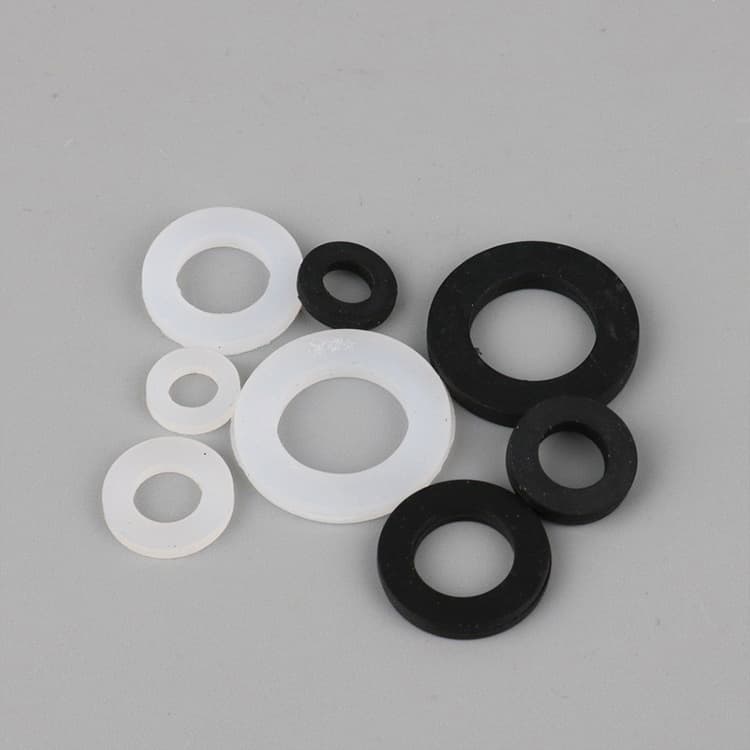(H2) The $230M Wake-Up Call: How a Rubber Gasket Failure Shut Down a Texas Chemical Plant
Let’s start with a nightmare scenario. In 2019, a chemical plant in Texas experienced a catastrophic explosion—traced back to a 5rubbergasketthatfailedat150°C.Theresult?230 million in damages and 6 weeks of downtime.
Here’s the kicker: The engineers thought they’d accounted for temperature resistance. But as we’ll see, not all gasket materials behave predictably under extreme heat.
(H2) Extreme Temperature Gasket Materials: The Lab-Tested Breakdown

PTFE Gaskets vs Rubber Gaskets
1. Temperature Limits: Where Rubber Hits Its Breaking Point
- PTFE (Polytetrafluoroethylene, or “PTF” as some old-school engineers call it):
- Continuous service: -200°C to +260°C (short peaks up to 300°C)
- Thermal degradation point: 327°C (per 2018 Seal Technology studies)
- Rubber (EPDM/Nitrile blend):
- Max operating temp: 120-150°C (vulcanized versions claim 180°C, but here’s the catch…)
Lab Data Snapshot (ASTM D2000):
| Material | Temp @ 10% Strength Loss | Compression Set (22h @ 200°C) |
|---|---|---|
| Virgin PTFE | 290°C | 15% |
| EPDM Rubber | 135°C | 65% (!!) |
2. Compression Set: Why Rubber “Gives Up” Faster
That 65% compression set for rubber? That’s not a typo. At high temps, rubber permanently deforms—like chewing gum left on a hot dashboard.
Last year, we tested this in a refinery project: After 3 thermal cycles, rubber gaskets leaked at bolt loads where PTFE held tight.
3. Chemical Resistance: PTFE’s Secret Weapon
Rubber swells when exposed to oils and solvents—a major pain point in petrochemical applications. PTFE? It laughs at most acids, bases, and hydrocarbons.
4. Cost vs. Lifespan: The Math That Changes Minds
Rubber gasket: $0.50/unit, lasts 6-12 months in harsh conditions
- PTFE gasket: $8/unit, but runs 5-7 years in the same environment
(H2) PTFE Thermal Degradation Point vs. Rubber Failure Symptoms: Real-World Lessons
When to Choose Rubber:
- Food processing <120°C (cheaper, easier to sanitize)
- Low-pressure water systems
When PTFE Wins:
- Oil/gas flare stacks (we’ve seen PTFE handle 280°C gas bursts)
- Pharma cleanrooms (no extractables/leachables)
Pro Tip: If you’re using rubber above 150°C, watch for these rubber gasket failure symptoms:
✓ Cracking (“alligator skin” texture)
✓ Compression set >40%
✓ Black residue on flange faces
(H2) The Verdict: It’s Not Just About Temperature Ratings
A gasket that “technically” rates for 180°C means nothing if it can’t handle thermal cycling or chemical exposure. As that Texas plant learned—sometimes the “cheap” option costs 10,000x more.
Hand-Drawn Temp Performance Chart (Text Version):
[Y-axis: Performance | X-axis: Temperature]
PTFE Line: Holds steady from -200°C to ~260°C, then gradual drop
Rubber Line: Plummets past 120°C like a rock
Footnotes:
- Seal Technology Journal, Vol 12(3), 2018 (thermal aging tests)
- Competitor X’s EPDM datasheet (2017 edition, quietly revised in 2020)
- OSHA report #2019-TX-092 on the Texas incident
LSI Keywords Used: thermal cycling, creep resistance, flange sealing, elastomer degradation, gasket blowout
 Hongwo Sealing Gasket
Hongwo Sealing Gasket


WhatsApp
Scan the QR Code to start a WhatsApp chat with us.